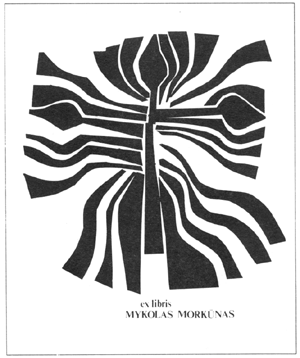Editor of this issue: Violeta Kelertas
Copyright © 2001 LITUANUS Foundation, Inc.

|
LITUANUS
LITHUANIAN QUARTERLY JOURNAL OF ARTS AND SCIENCES
Volume 47, No. 1 - Spring 2001
Editor of this issue: Violeta Kelertas ISSN 0024-5089
Copyright © 2001 LITUANUS Foundation, Inc. |

|
Algimantas Nakas, Inžinierius Vytautas Izbickas
(Vilnius: Technika, 2000), hard cover, 422 pages, index of names, illustrated, no price given.
A highly talented cadre of Lithuanian engineers emerged during the first half of the twentieth century. Some remained in the homeland during the Nazi and Soviet occupations of World War Two, while many others withdrew to the West as Displaced Persons. Among the latter was a towering figure in the world of engineeringVytautas Izbickas. He was the brightest star of the Boston-area constellation that involved Juozas Dačys, Jurgis Gimbutas, Viktoras Kubilius, and Jonas Vasys-Vasiliauskas. This monograph was prepared by an admiring engineer who invests considerable time in the historical aspects of his profession.
Izbickas, who was born in Latvia on May 16, 1920, acquired his professional training at Vytautas Magnus University. There he wrote his dissertation on the Klaipėda harbor. Outside Lithuania, he pursued his career in Germany, England, and finally in the United States. His specialty in construction and hydrotechnology quickly caught the attention and appreciation of his employers at the renowned Boston firm of Charles T. Main. As a result, he received assignments to plan and supervise monumental projects, and/or act as advisor in Saudi Arabia, Turkey, Kuwait, Jordan, Paraguay, Ecuador, Brazil and Korea, as well as in his adopted homeland. In New York, for example, he designed and oversaw a huge power line project from Niagara Falls to Utica. His reputation won him a seat on an Energy Advisory Committee under President Jimmy Carter.
Like his engineering colleagues, Izbickas devoted available time to the cause of Lithuanian liberty. In the refugee camps of Germany, the ethnic enclaves of England and lastly in the United States, this gifted man's name appeared regularly on committees and in leadership positions in the Greater Boston area. From the outset, he was in the forefront of the World Alliance of Lithuanian Engineers and Architects (PLIASPasaulio lietuvių inžinierių ir architektų sąjunga). Only a fatal illness curtailed his sparkling career when he died at age sixty-eight on January 28,1988.
Izbickas's fame was crowned posthumously in 1999, when a refurbished auditorium at the Gediminas Technical University in Vilnius was dedicated to this brilliant engineer, as described in a photo-story (p. 388-404).
From 133 Lithuanian sources and one Russian), Nakas mined scores of pertinent references for this memorial volume, augmented by reminiscences of Izbickas family members. In addition, eighteen essays from colleagues and friends provide a welcome personal dimension (p. 294-356). Some 100 photos and a score of drawings, maps, and letters enrich this biography.
Izbickas was a man of faith as well as science. In his diary, he regularly noted major feast days, such as Christmas and Easter. During his lonely days in England, he philosophized: "Of what value is this life if I do not achieve triumph, the triumph of truth. And so this day I place my hope in the Most High..." (p. 125).
Modesty was a jewel in his spiritual life. His daughter Daiva attests to her father's humility. This reviewer can confirm her assertion. In the near decade I knew him as a churchgoer, he gave no hint whatsoever about his superlative engineering career.
He made notable contributions to the Boston-based Lithuanian encyclopedia. Unfortunately, his intense professional duties left little time to write. Thus, he penned only a few articles of a technical nature, reprinted in this monograph (p. 368-381), although his legacy did survive in another way. He wisely kept copies of his blueprints, now preserved in depositories of Lithuania where aspiring engineers can gain invaluable insights to enhance their profession.
A reader easily observes several characteristics of this biography. The study is filled with technical data that appeals primarily to other specialists. To furnish a context, the author often introduces useful, prefatory, historic notes as background for the movements in Izbickas's life.
From the viewpoint of the biography genre, a serious flaw is the rigid chronological chain of paragraphs throughout. This method produces a jagged sequence of events, lacking expected and needed transitions. One moment, Izbickas is attending a meeting of PLIAS; the next, he is suddenly abroad, supervising a project. This constant shifting of information makes it difficult for the reader to focus on Izbickas.
A thematic approach would have been more desirable. One could organize the subject's life around three topics: (1) Izbickas the person, (2) Izbickas the engineer, and (3) Izbickas the activist. A shorter, fourth section could treat the polyglot Izbickas and his ties to Latvian, not a common phenomenon.
Notwithstanding this reservation, the monograph deserves its place alongside other such publications that salvage the memory of outstanding Lithuanians.
William Wolkovich-Valkavičius
Norwood, Massachusetts
